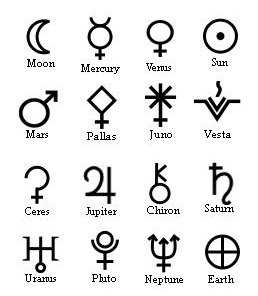9. I propose that the exact position of winter solstice (north of the equator) in the age of Gemini ought to have been a little earlier than at Sirrah. The winter solstice should 'stand in the water' before Sirrah was reached. Maybe it was located 6 days before Sirrah:
Gb6-20 has a 'midnight henua' - or rather raaraa ('no Sun at all', cfr at e.g. 2 Sticks) - in its center:
Glyph number 399 (corresponding to the synodical period of Jupiter) is a Thursday and 61 * 6 = 366. In Gb6-19 (a Sun day) we can count 61 * 9 = 549, which also easily can be transformed into 366 by first dividing by 3 (resulting in 183) and then multiplying by 2. The procedure is the same as when we after multiplying 314 (= 100π) with 150% will reach the number of glyphs on the tablet (471). 3 + 3 little 'balls' are hanging down in Gb6-20 and they could possibly represent 60 days at the back side and 60 days in front, which idea we recently have quickly investigated. But I have not found it supported by the pictures in the glyphs at these places:
The signs instead seem to say that we should count from Gb4-22 to Gb8-24:
The strange tagata in Gb4-22 is located at day number 343 which is the cube of 7, as if alluding to the ship with 6 decks of Utnapishtim. If 403 is connected with the 31 periods of the henua calendar representing (according to my conjecture) 13 days each then we could instead try with each 'ball' corresponding to 13 days:
For various reasons I find this solution more attractive. For instance could the reversed manu rere in Gb8-5 indicate the return of the living spirit to the newborn Sun. In the Babylonian zodiac the (significantly) little constellation Rainbow could be at this place:
All know that a rainbow proves Sun is present. Close by is the sign of Venus and in the opposite corner at Mad Dog (Toliman) is the sign of Saturn together with a symbol which looks like that for Sun but with a double rim. I suggest the rainbow sign together with Venus indicates where Spring Sun is 'born' (according to the drawing not at winter solstice and not at spring equinox but around the beginning of the 3rd month). At autumn equinox ('9 o'clock') Sun goes down into the 'water', which explains the double rim 'water' (vai) sign, and then it becomes dark (Saturn).
These symbols which I have copied from Wikipedia are those used by contemporary astrology which explains the inclusion of Pallas, Juno etc (these small 'planets' were not know anciently). But, we can see, the main planets have retained their old symbols. Mercury, for instance, is between Frond and Furrow. Jupiter (drawn like a curve combined with 4) perhaps has a sign meant to refer to the 4th and last corner of 'land', and evidently it is the corner of midsummer. Mars comes at the beginning of the 1st half-year and Jupiter at its end. Here a myth could be in place: "M172. Arawak. 'How birds acquired their colored plumage' Men and birds joined forces to destroy the huge watersnake, which dragged all living creatures down to his lair. But the attackers took fright and cried off, one after the other, offering as their excuse that they could only fight on dry land. Finally, the duckler (K.G.: a diver) was brave enough to dive into the water; he inflicted a fatal wound on the monster which was at the bottom, coiled round the roots of an enormous tree. Uttering terrible cries, the men succeeded in bringing the snake out of the water, where they killed it and removed its skin. The duckler claimed the skin as the price of its victory. The Indian chiefs said ironically, 'By all means! Just take it away!' 'With pleasure', replied the duckler as it signalled to the other birds. Together they swooped down and, each one taking a piece of the skin in its beak, flew off with it. The Indians were annoyed and angry and, from then on, became the enemies of birds. The birds retired to a quiet spot in order to share the skin. They agreed that each one should keep the part that was in its own beak. The skin was made up of marvelous colors - red, yellow, green, black, and white - and had markings such as no one had ever seen before. As soon as each bird was provided with the part to which it was entitled, the miracle happened: until that time all birds had had dingy plumage, but now suddenly they became white, yellow, and blue ... The parrots were covered in green and red, and the macaws with red, purple, and gilded feathers, such as had never before been seen. The duckler, to which all the credit was due, was left with the head, which was black. But it said it was good enough for an old bird ..." (The Raw and the Cooked.) |
|||||||||||||||||||||||||||||||||||||||||||||||||||||||||||||||||||||||||||||||||||||||||||||||||||||||||||||||

















